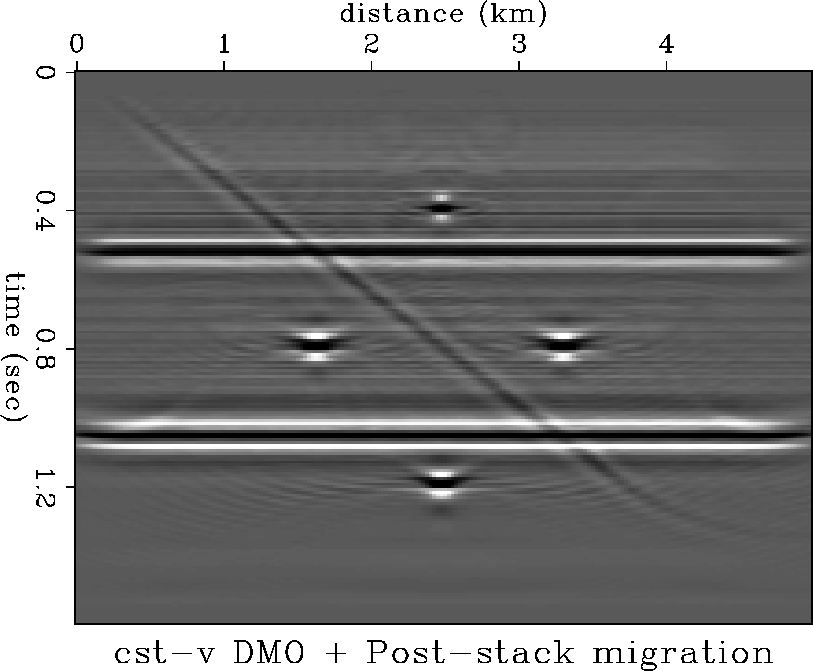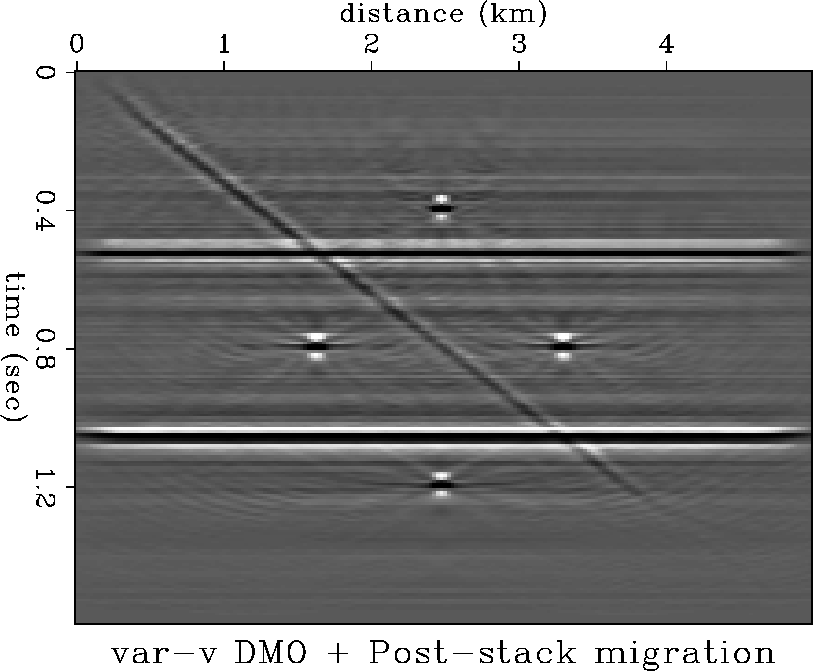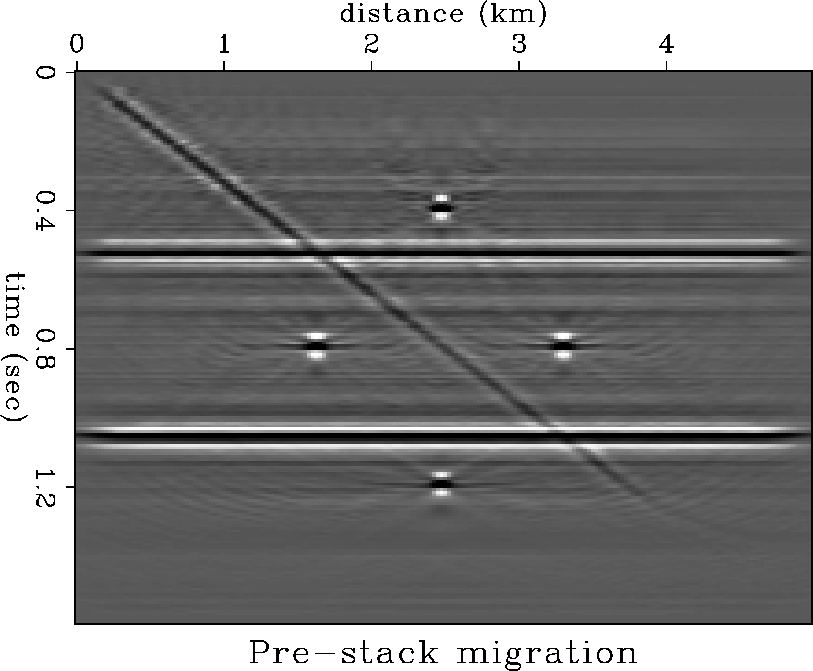




Next: CONCLUSION
Up: Blondel: How variable velocity
Previous: SOME AMPLITUDE ISSUES
There is no doubt that replacing the constant-velocity dip moveout step
by a variable-velocity dip moveout step improves the zero-offset section
after stack. However, the final result of a standard processing flow
is the post-stack migrated section. Thus, the idea of comparing the pre-stack
migrated section to the post-stack migrated sections with and without
the constant velocity assumption is natural. David Lumley
provided the synthetic data example that appears in the
next three figures. The synthetic model includes four diffractors
at various depth and midpoint positions, two horizontal events,
and a 45-degree dipping event, overlaid by a strong
constant RMS-velocity gradient ( ). The processing flow involving
a constant-velocity dip moveout step is displayed in Figure
). The processing flow involving
a constant-velocity dip moveout step is displayed in Figure ![[*]](http://sepwww.stanford.edu/latex2html/cross_ref_motif.gif) .
The three deepest diffractors are unfocused whereas the shallow diffractor
is focused but low-amplitude. The horizontal reflectors are well imaged
but the dipping event has lower amplitude than expected though it is not
mispositioned. As shown in Figure
.
The three deepest diffractors are unfocused whereas the shallow diffractor
is focused but low-amplitude. The horizontal reflectors are well imaged
but the dipping event has lower amplitude than expected though it is not
mispositioned. As shown in Figure ![[*]](http://sepwww.stanford.edu/latex2html/cross_ref_motif.gif) , the variable-velocity
step corrects for these inaccuracies and yields a post-stack migrated
section hardly differentiable from the pre-stack migration
(Figure
, the variable-velocity
step corrects for these inaccuracies and yields a post-stack migrated
section hardly differentiable from the pre-stack migration
(Figure ![[*]](http://sepwww.stanford.edu/latex2html/cross_ref_motif.gif) ).
).
cvmig
Figure 3 Post-stack migrated section
after NMO, constant-velocity DMO and stack. The deepest diffractors
are unfocused and the dipping event is low-amplitude.




 vvmig
vvmig
Figure 4 Post-stack migrated section
after NMO, variable-velocity DMO and stack. The diffractors and
the dipping event are well image.




 psmig
psmig
Figure 5 Pre-stack migration.
Click on the following button to see a movie of the three previous
pictures.





The similarity between the pre-stack migration and the post-stack
migration after depth-variable velocity dip moveout is not surprising
because the two processing are equivalent when there is no lateral
velocity variation. However, the clear improvement with respect
the a standard processing makes the variable-velocity dip moveout
a very useful tool.





Next: CONCLUSION
Up: Blondel: How variable velocity
Previous: SOME AMPLITUDE ISSUES
Stanford Exploration Project
11/16/1997
![[*]](http://sepwww.stanford.edu/latex2html/cross_ref_motif.gif) .
The three deepest diffractors are unfocused whereas the shallow diffractor
is focused but low-amplitude. The horizontal reflectors are well imaged
but the dipping event has lower amplitude than expected though it is not
mispositioned. As shown in Figure
.
The three deepest diffractors are unfocused whereas the shallow diffractor
is focused but low-amplitude. The horizontal reflectors are well imaged
but the dipping event has lower amplitude than expected though it is not
mispositioned. As shown in Figure ![[*]](http://sepwww.stanford.edu/latex2html/cross_ref_motif.gif) , the variable-velocity
step corrects for these inaccuracies and yields a post-stack migrated
section hardly differentiable from the pre-stack migration
(Figure
, the variable-velocity
step corrects for these inaccuracies and yields a post-stack migrated
section hardly differentiable from the pre-stack migration
(Figure ![[*]](http://sepwww.stanford.edu/latex2html/cross_ref_motif.gif) ).
).


